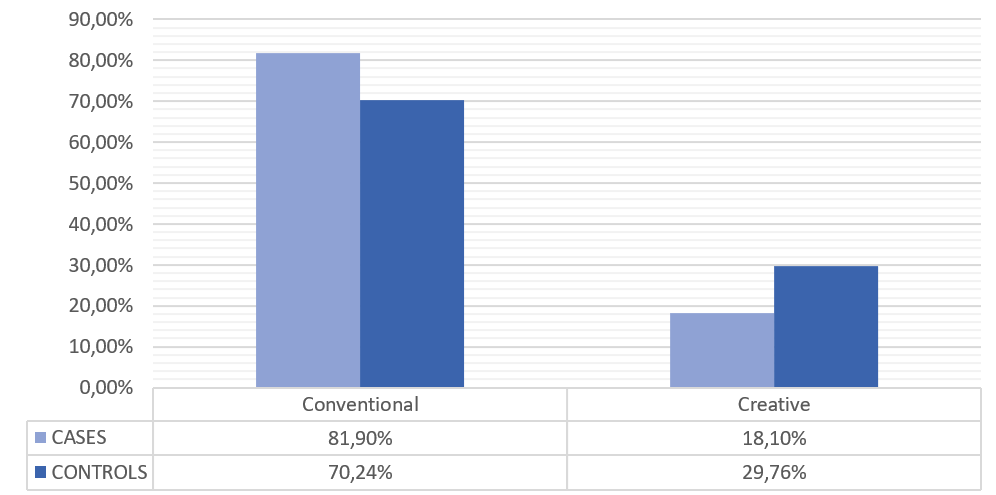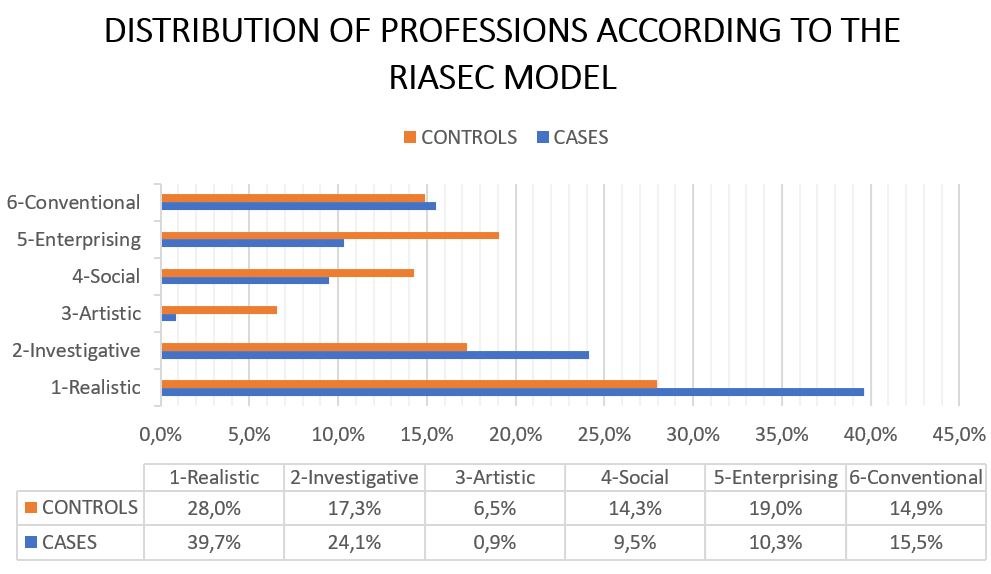Category: Parkinson's Disease: Non-Motor Symptoms
Objective: To asses if there is an association between professional occupation and Parkinson´s disease (PD).
Background: Some personality features including rigidity, less novelty-seeking, and less creative behaviour have been linked to PD. These may be related to dopaminergic deficit, and might influence the preference of professional occupation and substance addiction, even in the prodromal/prediagnostic stages.
Method: We present and on-going case-and-control study conducted in our Movement Disorders Unit and General Neurology Clinic. Cases were patients with clinical diagnosis of PD. Controls were patients with neurological diseases other than PD. Patients with atypical parkinsonisms, essential tremor, and dementia were excluded. Professional categories following the RIASEC classification and smoke habit were registered.
Results: So far, 400 patients (232 cases, 168 controls), mean age 71.6+9.6 and 65.3+12.2 years-old, respectively (p<0.001), have been included. Males predominated among cases (58.2% vs. 41.8% in controls). Dystonia (including cervical dystonia, hemifacial spasm, and blepharospasm), and migraine were the most common diagnosis among controls.
The most prevalent groups of professions among PD patients were realistic (agricultura, livestock, and basic proffessions) (39.7%), investigative (science and health) (24.1%), administration and finance (15.5%), vs. 27.9%, 17.3%, and 14.9% in controls (p=0.0003).
There was an increased frequency of creative professional occupations among controls (p=0.006): teaching (3.0% vs 2.2%), journalism (5.4% vs 0.9%), culture (6.5% vs 3.0%), art (5.4% vs 0.9%); enterprising professions was also more frequent in controls than in PD patients (19.0% vs 10.3%).
A trends towards a lower rate of past/current smoking in PD (37.5% vs. 41.1%, p=0.47) was observed.
Conclusion: Our findings suggest there could be a peculiar professional profile in PD patients, in line with previous studies. Higher levels of routine and less creative professions might be more appealing for subjects who subsequently develop PD. The relatively small sample size and demographic differences, as well as the heterogeneous control group for comparison, may limit the power of our study to detect significant differences.
To cite this abstract in AMA style:
E. Natera-Villalba, V. Ros-Castelló, A. Sánchez-Sánchez, A. Gómez-López, P. Pérez-Torre, S. Fanjul-Arbos, G. García-Ribas, C. Estévez-Fraga, I. Parées -Moreno, J.C Martínez-Castrillo, A. Alonso-Cánovas. PRO-PARK study: Is there an association between PROfessional occupation and PARKinson´s disease? [abstract]. Mov Disord. 2020; 35 (suppl 1). https://www.mdsabstracts.org/abstract/pro-park-study-is-there-an-association-between-professional-occupation-and-parkinsons-disease/. Accessed December 25, 2025.« Back to MDS Virtual Congress 2020
MDS Abstracts - https://www.mdsabstracts.org/abstract/pro-park-study-is-there-an-association-between-professional-occupation-and-parkinsons-disease/


